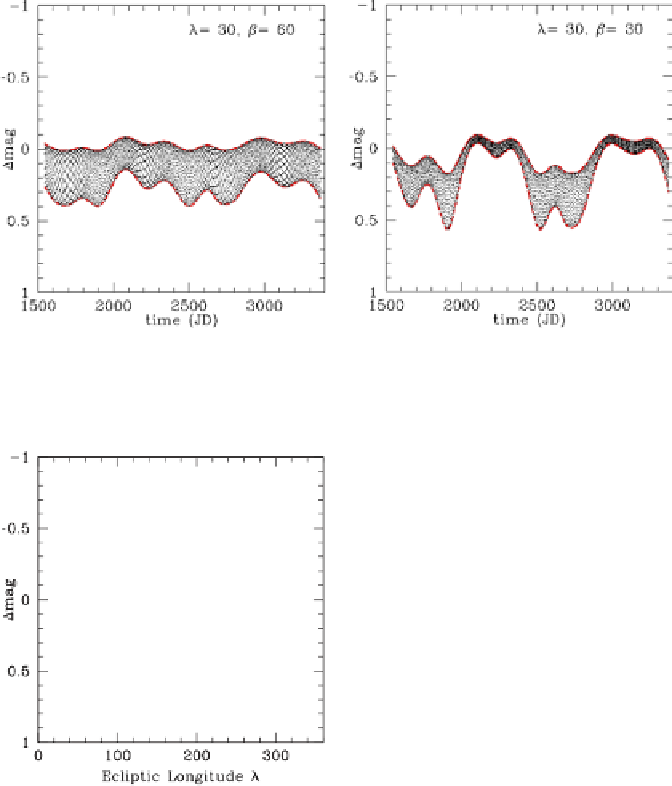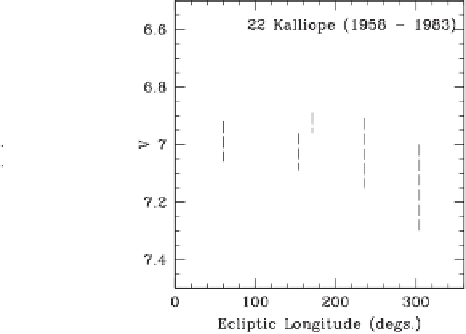Geoscience Reference
In-Depth Information
Fig. 4. Absolute magnitude difference with respect to first detection as a function of
time, for a simulated object having a given sidereal period, axial ratios, and longitude
of the pole
λ
, but with different values of the latitude
β
of the pole (see text).
Fig. 5. Absolute magnitude difference with respect to first detection as a function of
ecliptic longitude for the same object simulated in Fig. 4 (left panel). Gaia photometric
measurements will sample the interval of possible observing circumstances more e
-
ciently than typical ground-based observations. The right panel shows as an example the
photometric data-set of asteroid 22 Kalliope, obtained since 1958-1983, used by Zappala
and Knezevic
5
to derive the pole of this object.
It is more instructive to plot the magnitude difference with respect to
first detection as a function of ecliptic longitude, instead of time. Figure 5
(left) shows this kind of plot. Instead of the full theoretical domain of
the plane where the object can be observed, in this figure we show the











































